Washed up sunfish goes viral as curious fish fans flock to see it
Curious locals have braved the smell of rotting fish to catch a glimpse of a massive 2.7m sunfish that washed ashore on a South Australian beach, posting photos that have since gone viral
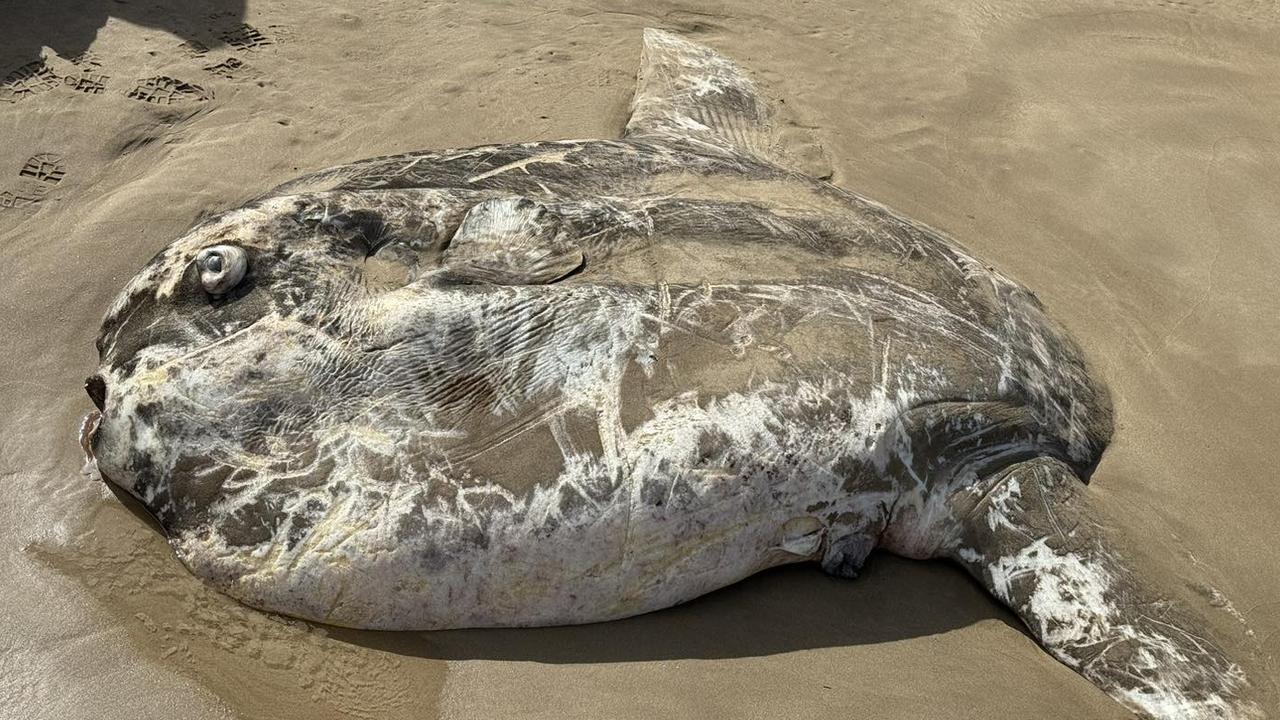
READING LEVEL: GREEN
Images of a giant sea creature that washed up on a South Australian beach have gone viral after Aussies were left stunned by the sheer size of the animal.
Thought to be 2.7m wide, the creature was photographed by Fish SA Magazine after it was spotted lying dead on the sand at Petrel Cove near Encounter Bay on SA’s south coast last weekend.
The South Australia Museum said the creature was likely to be a Mola alexandrini, also known as a bump-head sunfish.
“You can tell it’s a bump-head sunfish rather than one of the other two types (Mola tecta, the Hoodwinker sunfish and Mola mola, the Ocean sunfish) because of the prominent chin you can see in the photo,” a museum spokesman told Yahoo News.
Sunfish, which can grow as long as three metres and weigh as much as 2000kg, are found worldwide, with the species found at Petrel Cove one of the most commonly spotted in South Australia.
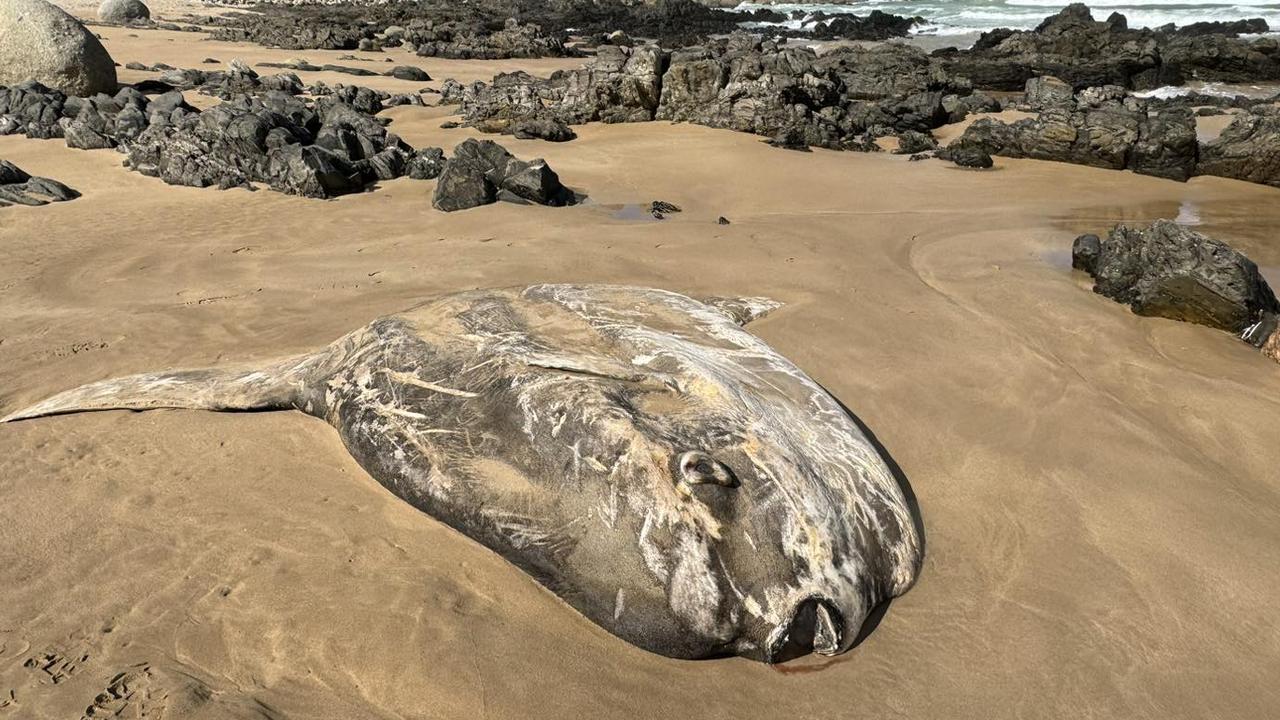
Curious locals have since flocked to the beach to take photos of the fish, despite it now starting to smell very bad.
Social media users have expressed awe as well as sadness over the find.
“Amazing. I wonder how prolific they are,” one person wrote.
“What a shame. They are beautiful. This makes me feel really sad,” said another.
“Beautiful – seen one that big snorkelling. Gentle creatures,” another wrote.
“That’s sad to see,” another shared.
Another social media user, Dani Brown, shared a photo of herself lying next to the fish for a size comparison.
“This is me with it today – for reference, I’m 164cm tall!” she captioned the photo.
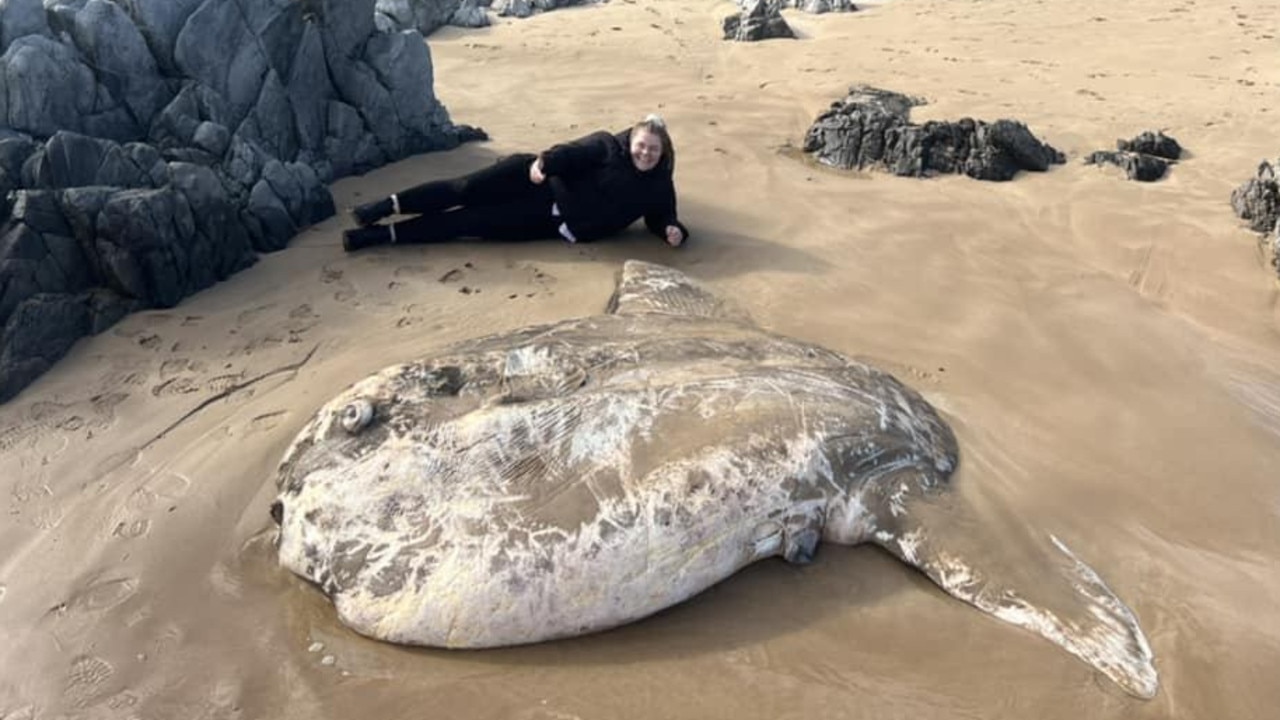
It’s not known what led to the sunfish’s death.
Danish marine biologist Dr Marianne Nyegaard previously told Yahoo News that it was difficult to figure out why the creatures die.
“Stranded sunfish typically appear to have been healthy with no obvious cause of death, or impairment to explain why they ended up on the beach,” Dr Nyegaard said.
The sighting comes years after a Mola mola, or ocean sunfish, made news across the world when it washed up near the mouth of the Murray River in South Australia in 2019.
At the time, Linette Grzelak, shared a photo of the creature to social media after her partner spotted the fish, which had already died, while out fishing.
“A sunfish found by my partner along the Coorong a couple nights ago … I thought it was fake,” the post read.
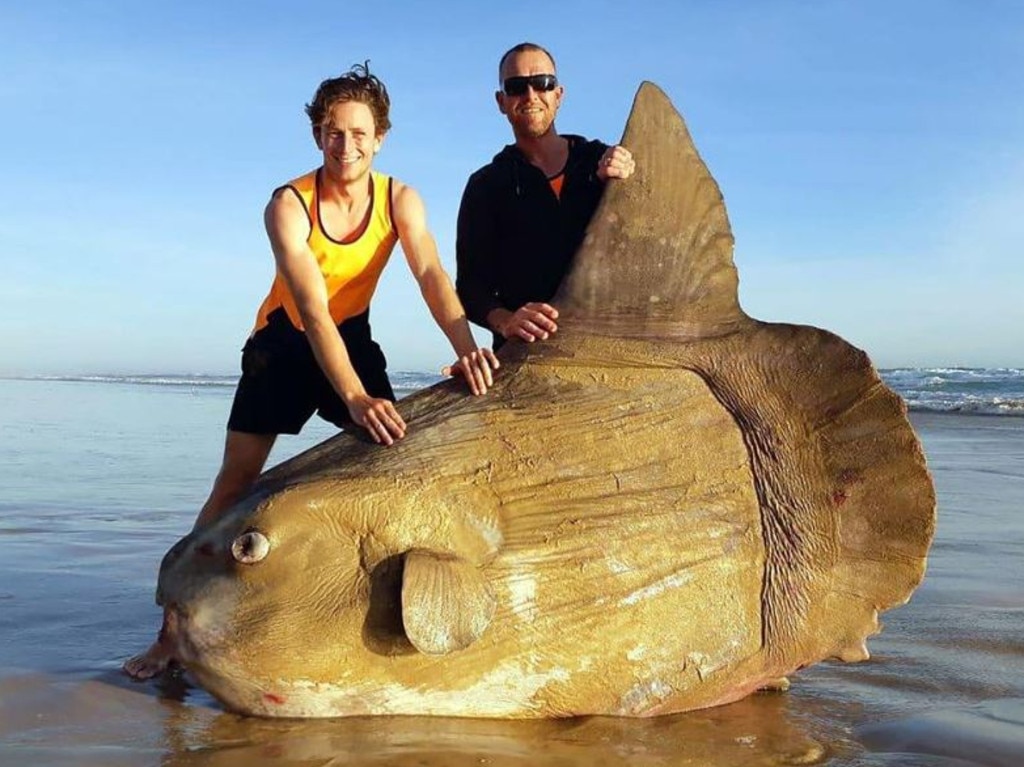
The Mola mola has a reputation for damaging boats and there have been times when the animal has been blamed for sinking yachts.
A yacht competing in the Sydney to Hobart race in 2019 went down off Flinders Island after it hit a sunfish “as big as two 44-gallon drums”, The Mercury reported.
The yacht lost its rudder after it collided with the fish and started taking on water while heading back to shore.
Another yacht damaged in the Sydney to Hobart race last year was also thought to have hit a sunfish.
WORLD’S BIGGEST FISH
Yes, we know sharks are fish too, but they aren’t the only whoppers in the ocean. Here are five of the world’s biggest fish species, not including predatory sharks, as ranked by Scuba.com
1. Whale shark – so named for its massive size, the whale shark is usually about 12m long but can grow as large as 18m, making it the largest fish species in the world. Unlike predatory sharks such as the Great White or Tiger shark, the whale shark is a gentle giant that survives by eating plankton. Weighing up to 20 tonnes, whale sharks can be found in warm, temperature seas.

2. Basking shark – like the whale shark, the basking shark is a peaceful creature that eats plankton by opening its mouth wide and filter feeding. Basking sharks are, on average, about 6-8m long but can grow as much as 12m in length and weigh up to 4.5 tonnes.

3. Oarfish – considered the longest bony fish alive, oarfish are serpent-like creatures that live in the depths of the oceans. Named after their long pectoral fins, which look like oars, they can reach a length of 17m and weigh about 270kg.

4. Mola mola – this species of sunfish can weigh as much as 2.5 tonnes while measuring almost 3.5m, making it the heaviest bony fish around, though nowhere near as heavy as whale sharks and other sharks, which have skeletons made from cartilage instead of bones. Mola mola live in temperate and tropical oceans and mostly eat jellyfish.

5. Manta Ray – the largest rays in the world, Manta Rays are highly intelligent creatures that live in tropical, subtropical and temperate seas. According to The Great Barrier Reef Foundation, they have the largest brain-to-body weight ratio of any living fish. Manta Rays have wingspans as long as 7m and can weigh up to 2 tonnes.

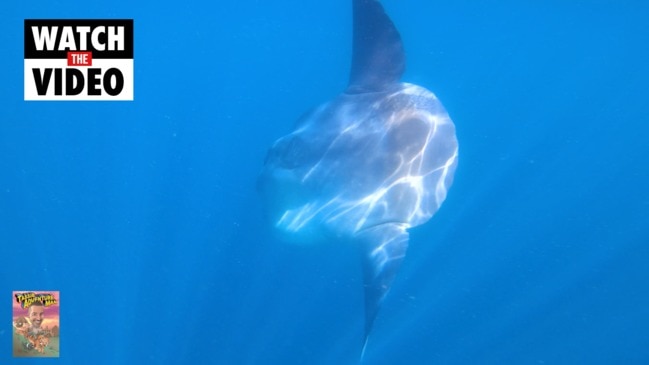
POLL
GLOSSARY
- prominent: sticking out or easy to see
- prolific: how many there are
- impairment: loss of the ability to do things caused by a health condition
- cartilage: a strong, flexible tissue that is not as hard as bone
- filter feeding: when sea creatures suck in large amounts of sea water in order to find plankton or other small organisms to eat
- pectoral fins: the fins on either side of a fish that are just behind the head
EXTRA READING
Teen goes fishing, catches $1 mill
Octopus leads diver to secret spot
Stingray pregnant without mating
QUICK QUIZ
1. What are the names of two different species of sunfish?
2. How large was the sunfish that washed up on Petrel Cove?
3. Which species of sunfish has a reputation for damaging boats?
4. What is the world’s largest species of fish?
5. How much do sunfish weigh?
LISTEN TO THIS STORY
CLASSROOM ACTIVITIES
1. Death of a sunfish
Work with a partner and brainstorm some possible reasons as to how this bump-head sunfish ended up deceased on the shore.
List your 5 most logical reasons below;
1.
2.
3.
4.
5.
Time: allow 15 minutes to complete this activity
Curriculum Links: English, Science, Personal and Social, Critical and Creative Thinking
2. Extension
Which of the species mentioned and described in the Kids News article, would you like to personally encounter while in the ocean?
List the fish species and describe why you’d like to see them up close and personal.
Time: allow 10 minutes to complete this activity
Curriculum Links: English, Science, Personal and Social, Critical and Creative Thinking
VCOP ACTIVITY
Guess the creature
Objective: To describe the sea creature using descriptive language and have others guess what it is based on the descriptions.
Instructions:
1. Gather the players in a circle.
2. For the first round, choose one player to be the describer and another player to be the guesser.
3. The describer will think of one characteristic or feature of the sea creature mentioned in the article (e.g., size, shape, appearance, behaviour).
4. Without revealing the creature’s name, the describer will use descriptive language to give clues to describe that characteristic or feature. For example:
– “It’s a sea creature that washed up on a beach in South Australia.”
– “It’s really big, about 2.7 metres wide.”
– “Some people think it’s beautiful, while others find it sad.”
5. The guesser listens to the clues and tries to guess the name of the sea creature based on the descriptions given.
6. If the guesser correctly identifies the sea creature (Mola alexandrini or bump-head sunfish), they get the point.
7. Repeat steps 3-6 with different players taking turns as the describer and guesser.
8. The player with the most points at the end of the game wins!
For younger players or to make the game easier, you can provide more specific clues, use the pictures from the article or online, or reveal additional characteristics of the sea creature to help them guess.


